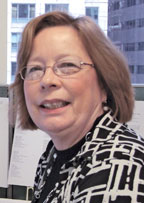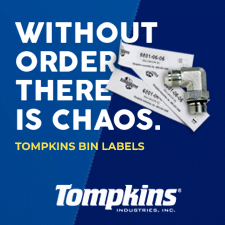Fixing the skills gap

by Mary Jawgiel
You’ve read and heard about the retirement of Baby Boomers. It’s real. It’s here now. Older employees are going to be leaving your organization at some point and taking years of knowledge and hard-learned lessons with them. So how does an organization take all the information that currently resides in the brains of current employees and put it into the heads of their successors so the next generation can step up to the job on Day One in the wake of retirements? You need a knowledge transfer plan.
So what is knowledge transfer? It’s exactly what it sounds like: moving knowledge from one person and making it available to another. The Institute of Industrial Relations at the University of California, Berkeley, breaks down the process like this: idea creation, sharing, evaluation, dissemination and adoption. It sounds simple, but in practice knowledge sharing is very challenging. Hurdles include time, willingness and other obstacles like cataloging the information, facility set up, access to technology and management support of the process, to name a few.
Assuming total buy-in and support from your organization’s management team for the concept of knowledge transfer, following are some steps any organization can take to institutionalize the process of knowledge transfer.
Getting Started
Start with policies and procedures documenting management expectations, job description responsibilities and how to do certain tasks. If there are policies and procedures already in place, each should be updated annually at a minimum, and also whenever a change occurs.
Each job description in the organization should include the task of developing and updating procedures on a regular basis that fall under the area of that job. Each job description should also include a requirement to review and complete the specific procedure(s) of others in the organization, as needed. For example, a front-office customer service person might be sent out to the warehouse to try out and review the procedure for assembling an order. What worked? What didn’t? The reviewer can provide feedback on the procedure so the warehouse person can update as needed. And, vice-versa.
If the procedure can’t be followed to provide the results as expected, it should be updated by a competent manager.
Watch it or Read it
Procedures can be written on paper, stored on servers and saved in binders. For some tasks, especially in a manufacturing organization, it might be a good idea to develop video procedures. For example, it might be easier to produce a cell phone video showing how to clean a specific machine rather than writing down all the steps. The younger generation is known for visual learning (think about the popularity of YouTube). In addition to being easier to produce, videos could very well be better learning tools for Millennial employees, rather than written procedures. Perhaps a video can supplement a written document or vice-versa.
Sharing General Knowledge and Letting Go
Some institutional knowledge is more difficult to capture and share. The number one sales person might have inside knowledge about dealing with an important customer. The chief engineer might know by heart the idiosyncrasies of specific machinery at another customer’s plant. This type of information exists in the heads of employees and it takes a concerted effort to get it out and into the heads of the next generation.
It’s a challenge for older people to let go of this type of knowledge because they may feel insecure about their job security. The old saying, “Knowledge is power” is not without merit. In order to encourage cooperation in the knowledge-sharing process, older employees must be made to feel secure in their employment situation. One way is to make the process of knowledge transfer organization-wide, not just aimed at specific individuals.
Develop a plan and let everyone (Boomers and Millennials alike) know that knowledge transfer is being put in place to make sure the organization stays on course and serves its customers regardless of who is in a specific job or completing a specific task. Asking Boomers to share what they know shows their expertise is valued. And, giving Millennials the opportunity to learn new things will help them advance within the
organization when the time is right.
Down to Specifics
Once the ruffled feathers are smoothed, the egos are massaged and the young pups are primed to learn, here are a few tactics to foster knowledge transfer:
For sales people:
- Most likely a customer relationship management procedure is in place, whether it’s software program-in-the-cloud or an old Rolodex. Include specific details about each customer such as does the person like to be contacted by phone or by email? Which person actually places the order? Do you need to take this customer out to lunch to keep them happy? How often? Who participates? What are the customer’s likes and dislikes?
- Set up weekly or monthly demonstrations so the person who has the knowledge (your Boomer employee) can actually demonstrate the tone of voice used to calm down an angry customer.
- If the knowledge to share is technical, set up a formal training class and invite anyone who wants to learn. You may be surprised who shows up.
- Foster a monthly Coffee and Donuts with the Sales Manager and his team for informal group knowledge-sharing.
For new employees:
- When a new employee comes on board, allow them to shadow veterans to learn the ropes of the position. (Make sure the shadowed employee is okay with this before you start: some people don’t like others looking over their shoulder.)
- Ask new employees to write down questions they have about their position or area and then task them with discovering who has the answers. Put together a list and make it available to everyone.
For everyone:
- Set up a lessons-learned sharing session where people can talk about things that went wrong and how it was handled.
- Video record learning sessions so others can go back and view at a later time. Millennials especially like to learn by watching rather than reading.
Formal mentoring and reverse mentoring programs also facilitate knowledge transfer. There are all kinds of ways to transfer knowledge from old employees to new, from Boomer to Millennial, so use more than one.
Make sure everyone understands the goal of knowledge transfer: so the organization can remain viable by transitioning new people smoothly when the time is right, as well as keeping customers happy and the organization on mission, no matter which individuals are performing certain job functions and tasks.
 Mary Jawgiel is ICP program director for the PTDA Foundation, whose life-long passion is working with young people. For more insights on recruiting, hiring, onboarding, training and retaining Millennial employees in the distribution industry, subscribe
Mary Jawgiel is ICP program director for the PTDA Foundation, whose life-long passion is working with young people. For more insights on recruiting, hiring, onboarding, training and retaining Millennial employees in the distribution industry, subscribe
to the ICP Talent Tipsheet.
This article originally appeared in the Jan./Feb. 2016 issue of Industrial Supply magazine. Copyright 2016, Direct Business Media.













